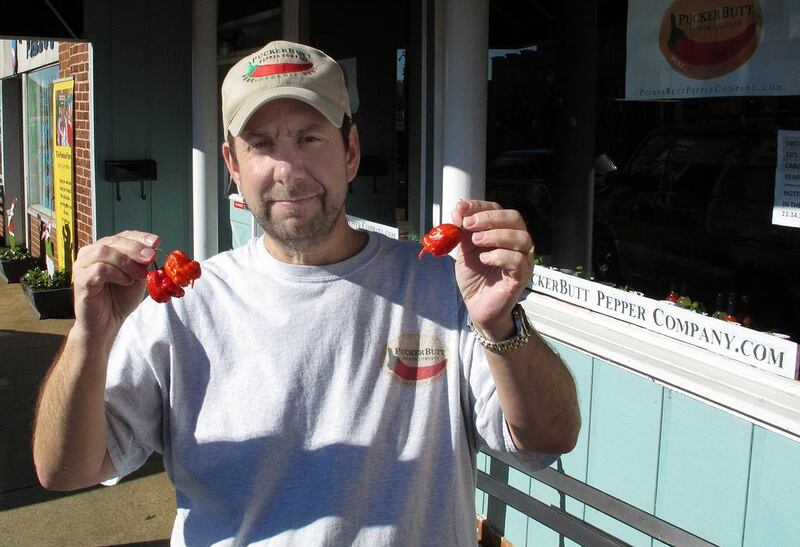FORT MILL // Ed Currie has an appropriate surname. He holds one of his world-record Carolina Reaper peppers by the stem, which looks like a scorpion’s tail. On the other end is a red fruit with a punch of heat nearly as potent as pepper sprays used by police.
Last month, the Guinness Book of World Records decided his peppers were the hottest on the planet, ending a more than four-year drive to prove no one grows a more scorching chilli.
The heat of Mr Currie’s peppers was certified by students at Winthrop University who test food as part of their undergraduate classes.
But whether Mr Currie’s peppers are truly the world’s hottest is a question that one scientist said could never be known. The heat of a pepper depends not just on the plant’s genetics, but also where it is grown, said Paul Bosland, director of the Chile Pepper Institute at New Mexico State University.
The science of hot peppers centres around chemical compounds called capsaicinoids. The higher the concentration of capsaicinoids, the hotter the pepper, said Cliff Calloway, the Winthrop University professor whose students tested Mr Currie’s peppers.
The heat of a pepper is measured in Scoville Heat Units (SCU). Zero is bland, while a regular jalapeño pepper registers about 5,000 on the Scoville scale. Currie’s world record batch of Carolina Reapers comes in at 1,569,300 SCU, with an individual pepper measured at 2.2 million. Pepper spray comes in at about 2 million Scoville units.
Pharmacist Wilbur Scoville devised the scale 100 years ago, taking a solution of sugar and water to dilute an extract made from the pepper. A scientist would then taste the solution and dilute it again and again until the heat was no longer detected. So the rating depended on a scientist’s tongue, a technique that Mr Calloway is glad is no longer necessary.
“I haven’t tried Ed’s peppers. I am afraid to,” he said. “I bite into a jalapeno – that’s too hot for me.”
Now, scientists separate the capsaicinoids from the rest of the peppers and use liquid chromatography to detect the exact amount of the compounds. A formula then converts the readings into Scoville’s old scale.
The world record is welcomed by Mr Currie, but it is just part of his grand plan. He has been interested in peppers all his life, the hotter the better.
Ever since he got the taste of a sweet hot pepper from the Caribbean a decade ago, he has been determined to breed the hottest pepper he can. He is also determined to build his company, PuckerButt Pepper Company, into something that will let the 50-year-old entrepreneur retire before his young children grow up.
The hot pepper market is expanding in the United States. In less than five years, the amount of hot peppers eaten by Americans has increased 8 per cent, according to US department of agriculture statistics.
Mr Currie’s world record has created quite a stir in the world of chilli heads, said Ted Barrus, a blogger who has developed a following among hot pepper fans by videotaping himself eating the hottest peppers in the world and posting the videos on YouTube under the name Ted The Fire Breathing Idiot.
Mr Barrus said Mr Currie’s world record is just the latest event in a series of pepper growers to top one another with hotter and hotter peppers.
“That’s the biggest bragging rights there are. It is very, very competitive,” he said.
* Associated Press





